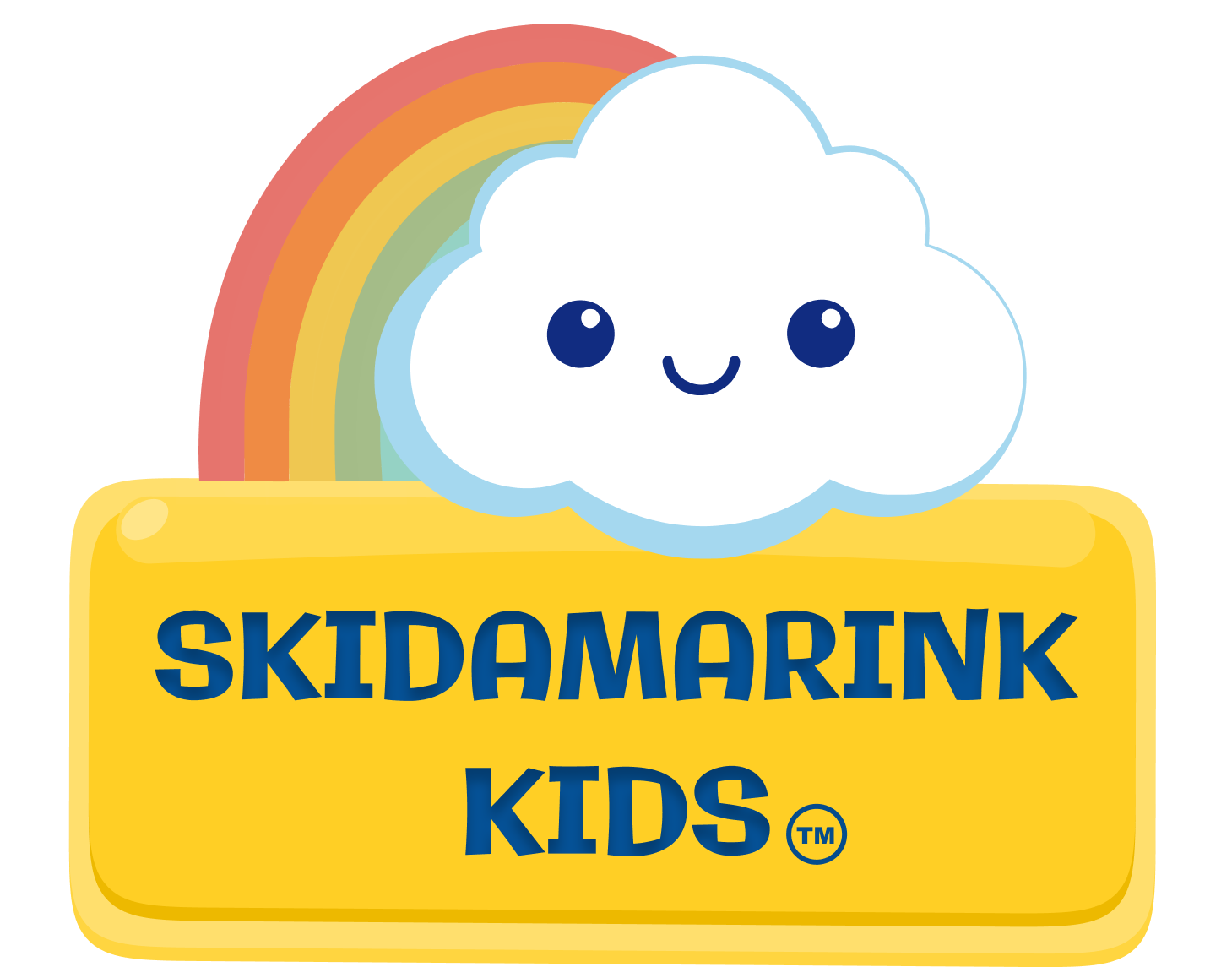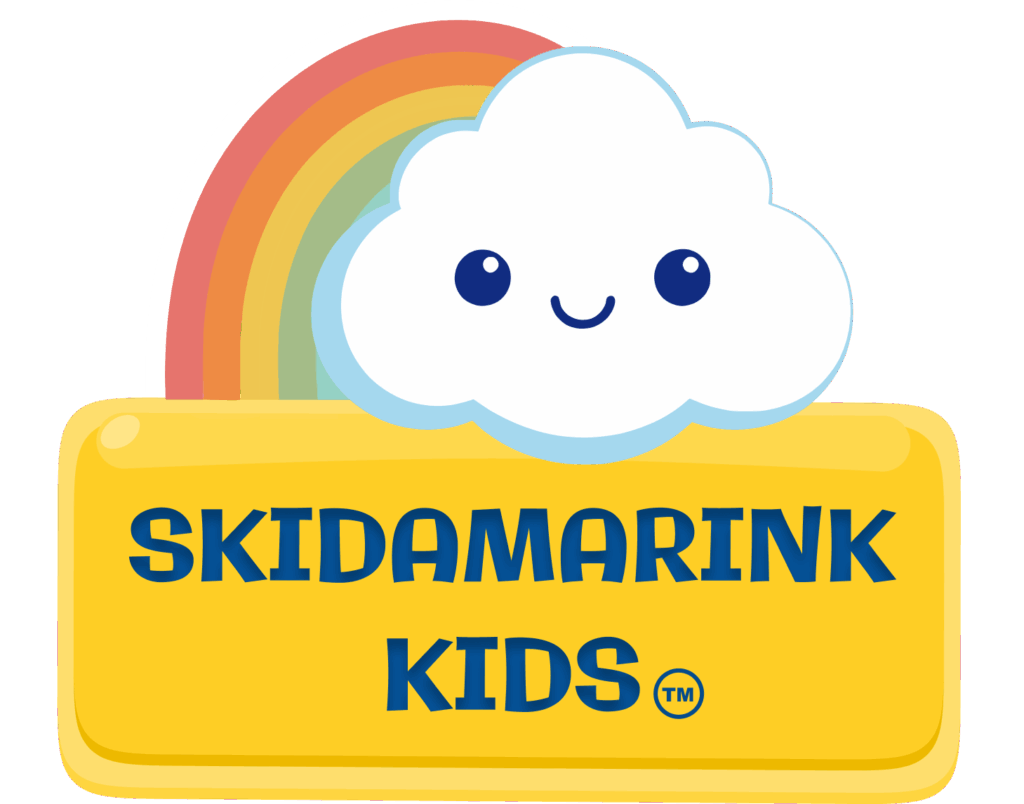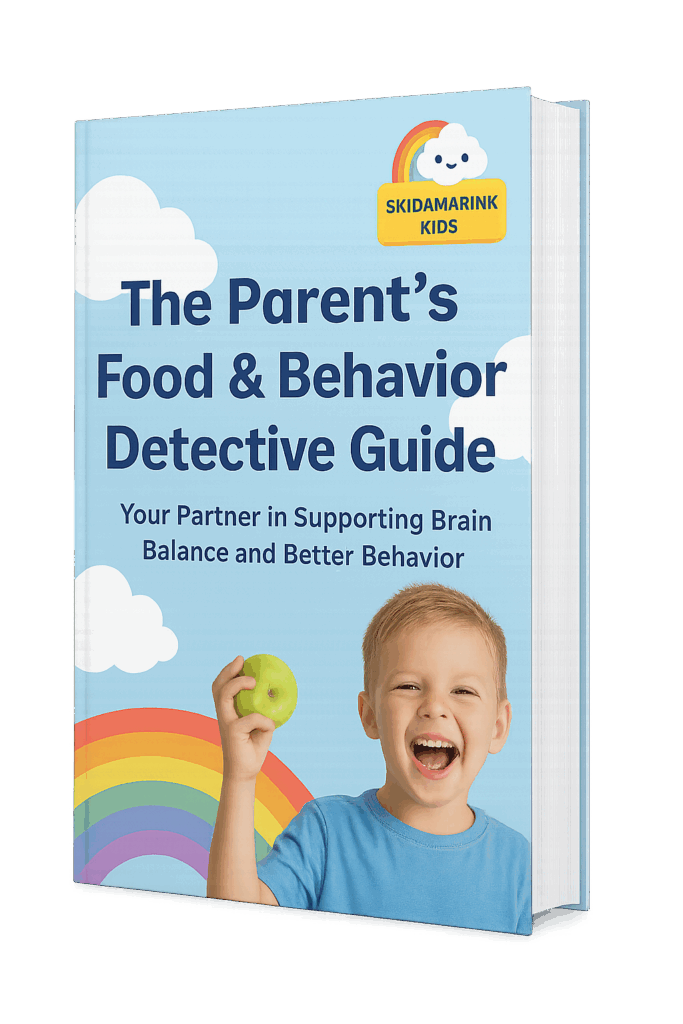Have you ever wondered how nutrition affects child behavior? You pack a lunch your child actually likes, but by 3pm the meltdown hits. Sound familiar? Maybe your little one bounces off the walls after that birthday party full of sugary treats. Or perhaps you’ve noticed your child struggles to focus after eating certain foods. If you’re wondering whether what your child eats could be the problem, you’re absolutely right to ask.
Understanding how nutrition affects child behavior can change your parenting journey. The foods we serve our kids don’t just fuel their bodies. Instead, they shape moods, influence focus, affect immunity and impact emotional regulation in powerful ways.
Today's Food Challenges
Our children face more nutrition obstacles then we did, when were as kids. Modern food production has changed dramatically, and not for the better.
First, crops contain fewer nutrients due to worn-out soil. Additionally, pesticides affect food quality in ways we’re still learning about. These changes impact more than physical health. In fact, they influence energy, mood, focus, and behavior in real, measurable ways.
Many families rely heavily on carbohydrate-rich processed foods. Unfortunately, these easy options lack the nutrition growing brains need to work well.
How Processed Foods Impact Your Child
That colorful cereal or fruit snacks seems harmless enough. However, processed foods create real challenges for developing bodies and brains.
Watch for these red flags:
High sugar causes energy spikes followed by crashes. Your child feels great one moment, then cranky and exhausted the next. This rollercoaster affects mood stability throughout the day.
Artificial dyes link to serious concerns. Research connects these additives to hyperactivity, attention problems, behavior issues, and extra sensitivity. Some studies even suggest cancer risks.
Unhealthy fats disrupt brain function. Your child’s brain needs quality fats to develop properly and stay focused. Cheap processed fats don’t cut it.
The gut-brain connection matters more than most parents realize. Poor gut health from chemicals and processed foods directly impacts mood and behavior. When your child’s digestive system struggles, their emotional regulation often follows
The Brain Balance Connection
Here’s something important that many parents don’t realize. Poor nutrition is actually considered a risk factor that affects brain balance in children.
What does this mean? Your child’s brain has two halves that need to work together smoothly. When nutrition is poor, it can lead to an imbalance between the sides of the brain. This imbalance can show up as trouble with self-control, emotional regulation, focus, and behavior. As well as learning challenges, speech and motor delays.
Think of it like this: good nutrition helps your child’s brain fire on all cylinders. Poor nutrition? It’s like trying to run a high-performance engine on bad fuel. The engine still runs, but not well.
Children who struggle with self regulation often have several risk factors working against them. Nutrition is one factor you can actually control and improve starting today. When you address nutritional imbalances, you’re giving your child’s brain the building blocks it needs to work better.
Want to understand more about why your child might struggle with self regulation and what you can do about it? Check out our detailed guide: Why My Child Can’t Self-Regulate: Understanding the Root Causes.
Making Better Choices for Development
Quality matters when you’re feeding a growing brain. Better ingredients support better behavior. It is that simple!
Choose these options when possible:
Grass-fed meats provide cleaner protein and healthier fats. Your child’s developing brain thrives on quality protein sources that aren’t loaded with hormones.
Pasture-raised eggs deliver better nutrition compared to regular options. They contain more omega-3 fatty acids that directly support brain health and emotional regulation.
Organic dairy reduces exposure to hormones and antibiotics. These substances can affect your child’s development in unexpected ways.
Fresh fruits and vegetables (organic when possible) deliver vitamins and minerals in their most powerful form. Whole foods contain nutrients that work together naturally.
I know organic everything isn’t realistic for most budgets. Do what you can. Even small improvements make a real difference in how nutrition affects child behavior.

Why Fresh Foods Support Growing Bodies
Fresh, whole foods give children what processed options simply can’t deliver. The difference shows up in behavior, mood, and overall functioning.
First, these foods are rich in important vitamins needed for brain growth and development. B vitamins, vitamin D, and others play key roles in brain chemical production and brain function.
Second, they support the best brain function and neural connections. Every healthy meal literally helps your child’s brain build new pathways for learning and emotional control.
Third, fresh foods aid mood regulation and emotional stability. When your child eats well, they handle frustration and disappointment more easily. It’s not magic—it’s biochemistry.
Additionally, natural fiber supports digestive health and the all-important gut-brain connection. A healthy gut means a happier, calmer child, which can go a long way to reduce meltdowns.
Finally, fresh foods tend to be lower in histamines. High histamine levels can trigger inflammation that affects digestion, immunity, behavior, focus, and mood.
Smart Snacking for Steady Energy
The afternoon slump doesn’t have to end in tears or tantrums. Strategic snacking prevents blood sugar crashes that trigger crankiness and meltdowns.
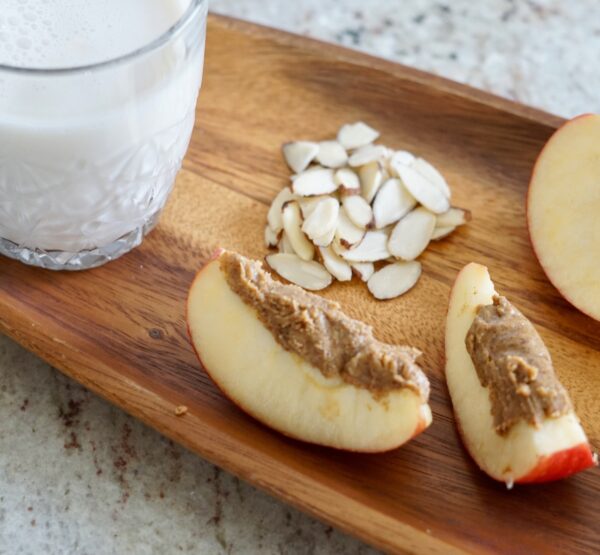
The power of protein:
Offering protein snacks every two hours when needed makes a huge difference. This simple strategy keeps blood sugar balanced, which directly impacts your child’s ability to regulate emotions and behavior.
The right snacks at the right times can completely change your afternoons. Instead of fighting through the challenging after-school hours, you can actually enjoy time with your child.
Adding protein snacks is a Trust-Based Relational Intervention (TBRI) principle. This is considered a Trauma Informed Care strategy. Yet, all children can benefit from this tip. Research has shown that adding protein every 2 hours along with frequent sips of water can significantly reduce challenging behaviors.
Need the complete protein snack list and simple nutrition tips to improve your child’s behavior?
Our free Parent’s Food & Behavior Detective Guide includes 20+ kid-approved options, printable trackers, and a proven schedule that prevents blood sugar crashes (and the difficult behaviors that follow them).
Reading Labels for Better Choices
Becoming a label detective protects your family from harmful additives. This skill matters more than ever in today’s food landscape.
Look for these signs of quality:
Simple ingredients list means less processing and more real food. If the list reads like a chemistry experiment, put it back on the shelf.
Easy-to-read words show whole foods rather than lab creations. Can you say everything on the label? If not, think twice.
Few preservatives suggest fresher, more natural options. Some preservation is normal, but too many additives raise red flags.
No artificial dyes protects your child from unnecessary behavior triggers. Many other countries have already banned these additives for good reason.
No high-fructose corn syrup means avoiding one of the worst processed ingredients. This sweetener affects metabolism and behavior differently than natural sugars.
Organic options when possible reduce exposure to pesticides and chemicals. Even choosing organic for just the “dirty dozen” fruits and vegetables helps a lot.
Hormone and antibiotic-free products protect your child’s developing system. These substances can disrupt natural growth patterns and behavior regulation.
Making Nutritious Food Fun
Healthy eating doesn’t have to feel like a battle you fight every single day. Creative presentation turns nutrition into an adventure kids actually enjoy.
Try these easy strategies:
Use cookie cutters to create fun shapes from sandwiches, fruit, or cheese. Suddenly that boring cheese becomes exciting stars or hearts that your child wants to eat.
Create food faces and playful presentations on the plate. A strawberry nose and blueberry eyes turn a nutritious snack into entertainment that makes kids smile.
Pick produce together at markets or stores. Kids eat better when they help choose what’s for dinner. Let them select one new fruit or vegetable each shopping trip.
Plant vegetables if you have any space available. Even a small herb garden creates real connection to food. Kids who grow food develop natural curiosity about eating it.
Cook together as a family activity. Yes, it’s messier and takes longer. But children learn valuable skills, gain sensory exposure and become truly invested in meals they helped create.
Let children help set the table and serve food to the family. This builds independence and makes them feel important and valued. Responsibility increases buy-in a lot.
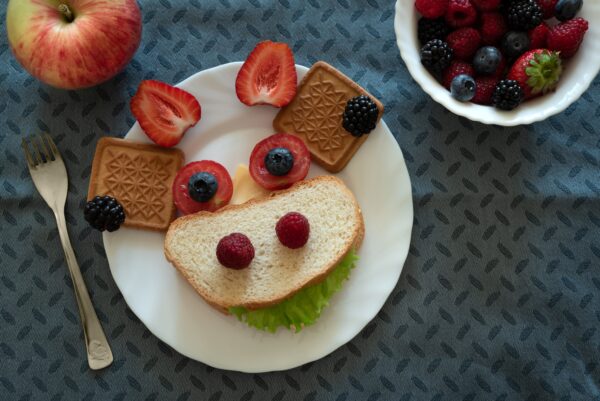
Supporting Hydration for Brain Function
Water does more than just stop thirst. Proper hydration directly impacts how nutrition affects child behavior every single day.
Make water appealing to your kids:
Regular water intake helps steady mood throughout the day. Even mild dehydration causes noticeable crankiness in children.
Hydration keeps energy levels stable. Tired, grumpy kids often just need more water and a protein snack.
Water supports brain function and focus dramatically. Your child thinks better and focuses longer when properly hydrated.
Add fruit slices for natural flavoring without sugar. Strawberries, lemon, or cucumber make water more interesting and appealing to kids.
Use special cups that children actually enjoy using. Let them pick a favorite water bottle at the store. Ownership increases usage a lot.
Make water easy to reach throughout the day at home and school. Keep cups or bottles within easy reach. Out of sight truly means out of mind for kids.
Avoid sugary drinks that negatively affect attention and behavior. Juice, soda, and sports drinks create the same problematic sugar spikes as candy.
Model taking sips throughout the day yourself. Your child watches and copies everything you do. Be the living example of healthy hydration habits.
Building Healthy Habits Together
Family involvement makes nutrition changes stick for the long term. These habits last a lifetime when everyone joins in together.
Create meaningful connections around food:
Shop as a family while talking about food choices and why they matter. Turn grocery trips into valuable learning moments about nutrition.
Cook together to build positive food relationships and memories. Even toddlers can help wash vegetables or stir simple ingredients safely.
Plant herbs for a direct connection to real food sources. Watching food grow creates deep understanding and appreciation in children.
Wash vegetables as a sensory activity that young children truly enjoy. The different textures and colors fascinate little ones naturally.
Plan meals together so everyone has input and feels heard. Kids eat better when they help decide what’s on the menu.
Make choices together to build independence and decision-making skills. Offer two healthy options and let your child pick one. This teaches valuable life skills.
Encourage kids to help put food on others’ plates at mealtimes. This sensory exposure increases food tolerance, fine motor control, and kindness, as well as sense of belonging.
For older kids, get them involved in simple meal prep tasks. Basic knife skills, measuring ingredients, and following recipes build real confidence and ability.
For more strategies on creating daily routines that support healthy eating and behavior, check out our blog, Daily Routine for Kids: How to Create Structure That Supports Your Child
Learn more about sharing mealtime responsibilities well in our blog, Reduce Mealtime Battles: Division of Responsibility Guide
Next Steps: When Eating Gets Complicated
Sometimes food challenges go beyond basic picky eating. You might notice your child seems to react badly to certain foods. They might refuse foods for reasons you can’t quite understand. Or mealtimes might feel like constant battles that leave everyone stressed and upset.
These situations often involve food sensitivities or sensory processing differences. The good news? There are proven strategies and professional support available to help.
In Part 2 of this series, we’ll cover:
- Understanding food sensitivities and how they affect behavior differently than allergies
- Recognizing when picky eating might be sensory-related
- Knowing when to seek professional help and what types of support are available
- Real solutions for extreme feeding challenges that go beyond typical pickiness
Continue to Part 2: Child Food Sensitivities and Behavior: When to Worry and What to Do
Want Information on Picky Eating
Understand picky eating: Picky Eating vs Problem Feeding: When to Worry About Your Child helps you know when eating challenges need professional support.
Learn practical feeding strategies: How to Help Picky Eaters Try New Foods: Food Exposure Strategies That Actually Work provides step-by-step methods.
The Ongoing Journey of Understanding How Nutrition Affects Child Behavior
Providing the best nutrition for your child’s development is a marathon, not a sprint. Understanding how nutrition affects child behavior empowers you to make smart choices despite today’s challenging food landscape.
Growth brings constant changes to nutritional needs. What worked last month might not work today. Stay flexible, stay watchful, and keep learning.
By focusing on whole foods, limiting processed options, and creating positive mealtime experiences, you’re doing more than just feeding your child’s body. You’re nourishing their developing brain and laying the foundation for lifelong health, strong learning abilities, and solid emotional well-being.
Remember that progress, not perfection, is always the goal. Small improvements add up over time in meaningful ways. Celebrate every single positive step forward, no matter how small it seems.
Ready to Stop Playing Detective Alone?
You’ve read the blog. You’re noticing patterns. But now what?
Imagine having:
✨ A complete 7-day action plan that tells you exactly what to do first, second, and third
✨ Printable food and behavior tracker (so you stop trying to remember everything)
✨ The exact questions to ask your pediatrician (so they take you seriously)
✨ Food swap charts you can stick on your fridge
✨ Easy strategies to help prevent meltdowns before they start
✨ Guidance to help determine if your child’s behavior is related to food sensitivities
That’s exactly what’s inside our free Parent’s Food & Behavior Detective Guide.
No more wondering “is it the food or just a phase?” No more feeling like you’re the only one struggling.
Join parents who’ve downloaded this guide and finally have a clear path forward.
Takes 30 seconds. Changes everything.
Disclaimer: This blog provides educational information only and is not intended to replace professional medical advice, diagnosis, or treatment. Always consult with your child’s pediatrician or qualified healthcare provider before making significant changes to your child’s diet, especially if your child has existing health conditions or suspected allergies.
You’re not alone in this journey. Every parent struggles with feeding challenges at some point. Trust yourself, stay patient, and remember that every healthy choice you make matters. Your child is lucky to have a parent who cares this much about their wellbeing.
– Kendra
